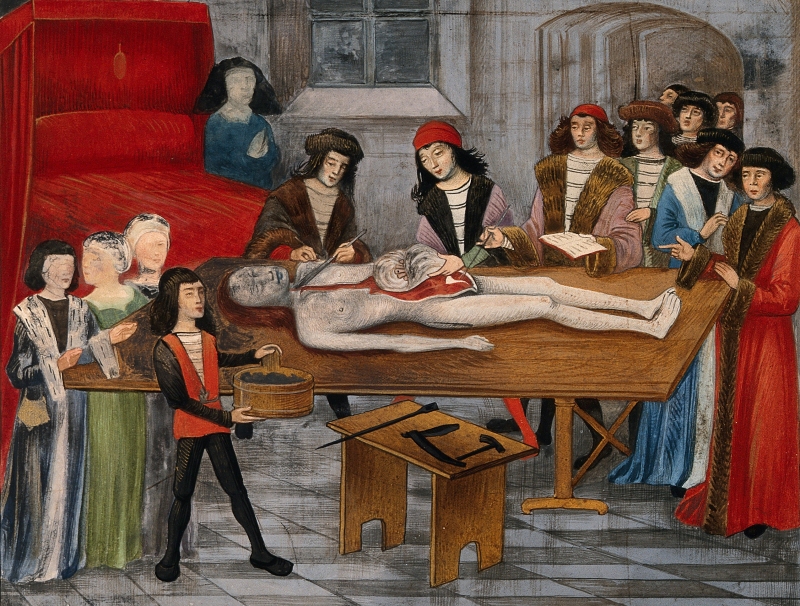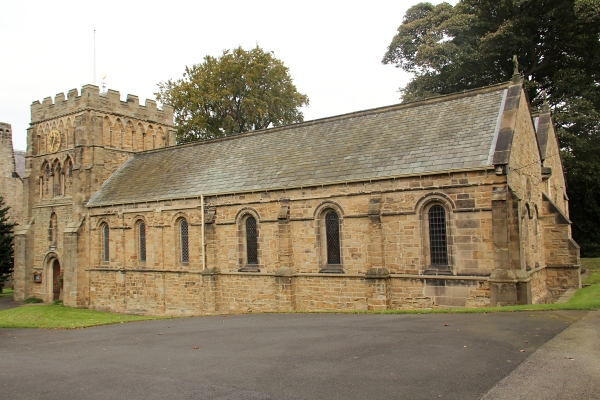
Medicine during the medieval era was multi-faceted, relying on the skills of several classes of practitioners. The ill and aged were treated by university trained physicians, monks, or folk healers, depending on the patient's socio-economic class. Though medical practices and procedures in the middle ages are generally considered obsolete and relying on herbal remedies, prayer, spells and incantations, there were also surgeries performed and cures perfected that are similar to modern procedures.
The first medical university was founded in the tenth century in Salerno, Italy where Greek manuscripts written by such physicians as Hippocrates were studied. Medieval physicians followed the Greek belief that the body was made up of four humors: sanguine (blood), choler, phlegm and melancholia. They believed that the primary cause of illness was an imbalance of the humors, each of which were given qualities of heat and moistness. Sanguine was hot and moist, choler was hot and dry, phlegm, cold and moist, melancholy, cold and dry. They worked to diagnose which humor was at fault then balanced out or purged the humor with herbal remedies and often by bloodletting or by the administration of laxatives.
The physicians also believed, in what became known as the Doctrine of Signatures, that the color of flowers and other properties of plants indicated their usefulness in treating particular diseases. For example, plants which bore yellow flowers, such as dandelion and fennel, were linked to the liver's yellow bile and were recommended to treat jaundice.
What few physicians there were stayed mainly in the cities where they received substantial wages and privileges. The physicians' services were expensive and affordable only by the very wealthy. As a result, most formal medicine was practiced and governed by the church, which thought illness was divine retribution. Due to this belief, many of the sick took pilgrimages in the hopes of recovering by making peace with God.
This belief, however, did not stop the monks, who were the most literate of the general population, from applying what they had learned by making copies of the ancient medical texts. Each monastery had an infirmary where treatment was available with herbal remedies, based on those prescribed by Hippocrates and others, made from plants cultivated in their gardens. The earliest hospitals were established by monasteries and were primarily refuges for the old and disabled and traveling pilgrims.
More practical medicine for the masses, usually performed by women, relied on folk remedies passed down by elders. Herbal remedies were only one of the resources available. Healing wells, stones, and charms played a part as well, often in combination. Pagan cures, incantations and spells were also practiced. These were forbidden by the church, and as a result, over time many archaic spells were given a Christian flavor. Instead of invoking the pagan gods, the Christian God and patron saints were called upon.
Thus, on one side there were the university trained physicians, all men, who were based in towns and cities and served the wealthy. On the other side there were the folk healers, usually women, in the rural areas. In the middle were healers in the religious orders, who incorporated both aspects of healing into their practices. All used many of the same plant remedies but operated in distinctly separate socio-economic groups and with great distrust and/or contempt for each other. The situation was amplified over the centuries resulting in religious persecution and witch hunting which ultimately led to the execution of thousands of folk healers who were so skilled that they were thought to have a pact with the devil.

The Middle Ages contributed a great deal to medical knowledge. This period contained progress in surgery, medical chemistry, dissection, and practical medicine. The Middle Ages laid the ground work for later, more significant discoveries. There was a slow but constant progression in the way that medicine was studied and practiced. Read more at Wikipedia.

Sherburn Hospital, a medieval hospital located to the southeast of Durham, England was founded in 1181 to care for 65 lepers. Read more at Wikipedia.